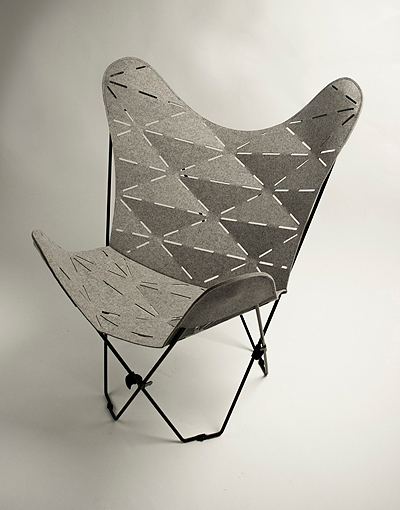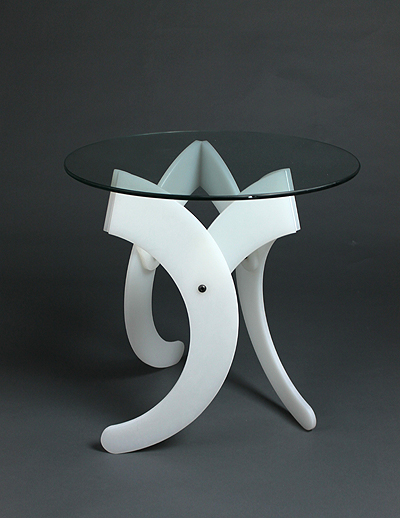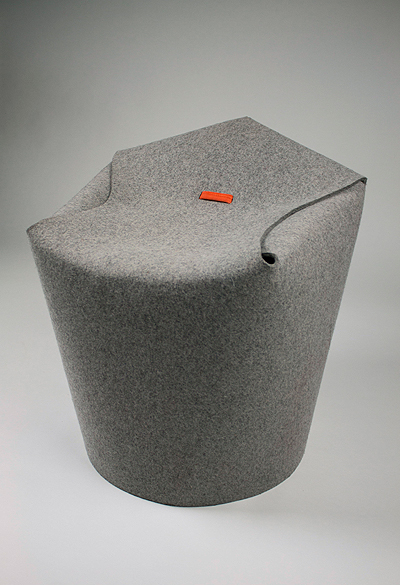|
The US industrial designers brought a range of products that are designed and produced through folding non-paper materials to London last week Brought together by a shared interest in materials and folding, the Wasatch Design Collective is a co-operative of industrial designers from the US. One of the group, Christian Poulsen, spoke to Icon about their work. Tell us about your latest products? We had the chance to debut a number of products at Clerkenwell Design Week last week. Facetation is a reinterpretation of the classic Butterfly chair in felt, with faceted panels to give it texture and an aspect of interaction.
Facetation The Circle/Circle table uses a folding mechanism to quickly collapse the three legs into a circle with the same diameter as the glass top. The B66 chair and side table are each made of a single piece of felt, partially saturated with resin which, when folded up and connected together, gives it the strength to support weight, but maintains enough flexibility to be unfolded and rolled up for storage.
Circle/Circle table What is the thinking behind them? Most of what we do incorporates folding in some way. Folding is a transformative process that can create efficient products with few or no moving parts using low waste processes, which can then be shipped flat and folded by the end user into a final form. We also feel that folding as a design and making activity is a joyful endeavour. Paper is a truly great folding material, but it has limitations. We are striving to translate common paper-folding techniques for non-paper materials – for example, the legs of the Circle/Circle table are made from polypropylene, which works perfectly with the living hinge needed to make the mechanism work. Tell us about your approach to design? A lot of what we do starts as broad origami exploration. When we discover some aspect that is intriguing or surprising, we experiment by recreating it in different structural materials. This open-ended iterative exploration naturally leads us to what the product will actually become, rather than trying simply to design a chair that folds. What interests you about folding? We find there to be something really exciting about the transformation of moving from flat to a form. The act of folding engages the user and builds an emotional connection. When you fold something, it becomes yours and you feel attached to it. We use folding in our design process as a form of discovery, as an iterative tool, as a morphogenic exploration and as a validation technique. As we use folding in our design process, we are also building our production understanding, because we can almost directly transfer our design models to manufacturing. On a practical level, being able to fold something to reduce its footprint is great for space and costs.
Felt stool Tell us about the collective and how you work together We’re based in Utah in the foothills of the Wasatch Range of the Rocky Mountains. Our landscape is folded all around us, so it is a constant backdrop to our work. Our backgrounds are all in industrial design, but we have a broad range of interests and experiences. We all have our own projects that we work on based on those interests, but we share resources, space and tools. Our collective is a way for us to explore our ideas and amplify the results. What do you have planned next? Although some of our products are in small-scale production, much of what we’re doing is still done by hand or one-off production. Our next step is to connect with manufacturers to produce things on a larger scale. |
Interview Debika Ray |
|
|



















